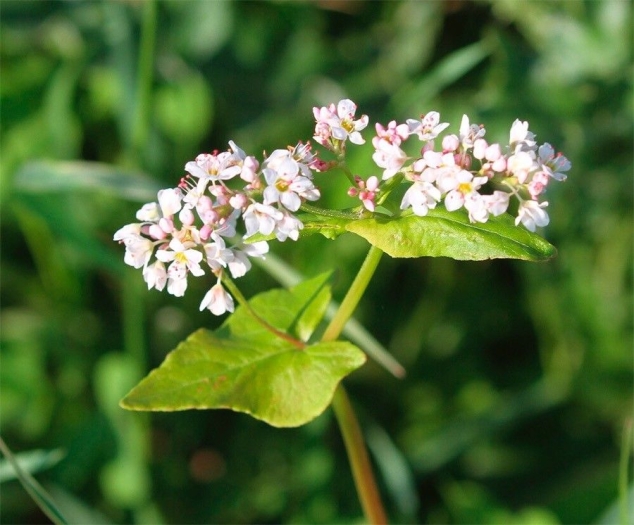Common Buckwheat
(Fagopyrum esculentum)
Common Buckwheat (Fagopyrum esculentum)
/
/

Arne Holgersson
CC BY-SA 4.0
























































Estimated Native Range
Summary
Common Buckwheat is valued for its rapid growth cycle, completing its life span in just 10–12 weeks, making it suitable for regions with short growing seasons or as a second crop. It is also appreciated for its ability to thrive in low-fertility or acidic soils, where excessive fertilizer, particularly nitrogen, can actually reduce yields. Buckwheat’s flowers are a source of dark-colored honey, which is a unique product of this plant. In gardens, it is often used as a ground cover or green manure to enhance soil quality. It prefers full sun to part shade and requires well-drained soil with low to moderate water. While it is not typically grown for ornamental purposes, its flowers can add a subtle charm to garden spaces.CC BY-SA 4.0
Plant Description
- Plant Type: Herb
- Height: 0.5-3 feet
- Width: 2-4 feet
- Growth Rate: Rapid
- Flower Color: Pink, White
- Flowering Season: Summer
- Leaf Retention:
Growth Requirements
- Sun: Full Sun, Part Shade
- Water: Low, Medium
- Drainage: Fast, Medium
Common Uses
Bee Garden, Bird Garden, Drought Tolerant, Edible*Disclaimer: Easyscape's listed plant edibility is for informational use. Always verify the safety and proper identification of any plant before consumption., Fragrant, Low Maintenance
Natural Habitat
Originally from Central and Southeastern China
Other Names
Common Names: Silverhull Buckwheat, Buckwheat, Japanese Buckwheat, Heidekorn, Buchweizen, Echter Buchweizen, Alforfón, Grano Sarraceno, Grano Turco, Trigo-Sarraceno
Scientific Names: , Fagopyrum esculentum, Polygonum fagopyrum, Fagopyrum sagittatum, Polygonum emarginatum, Fagopyrum fagopyrum, Fagopyrum emarginatum, Fagopyrum vulgare, Fagopyrum esculentum subsp. ancestralis, Polygonum elegans
GBIF Accepted Name: Fagopyrum esculentum Moench